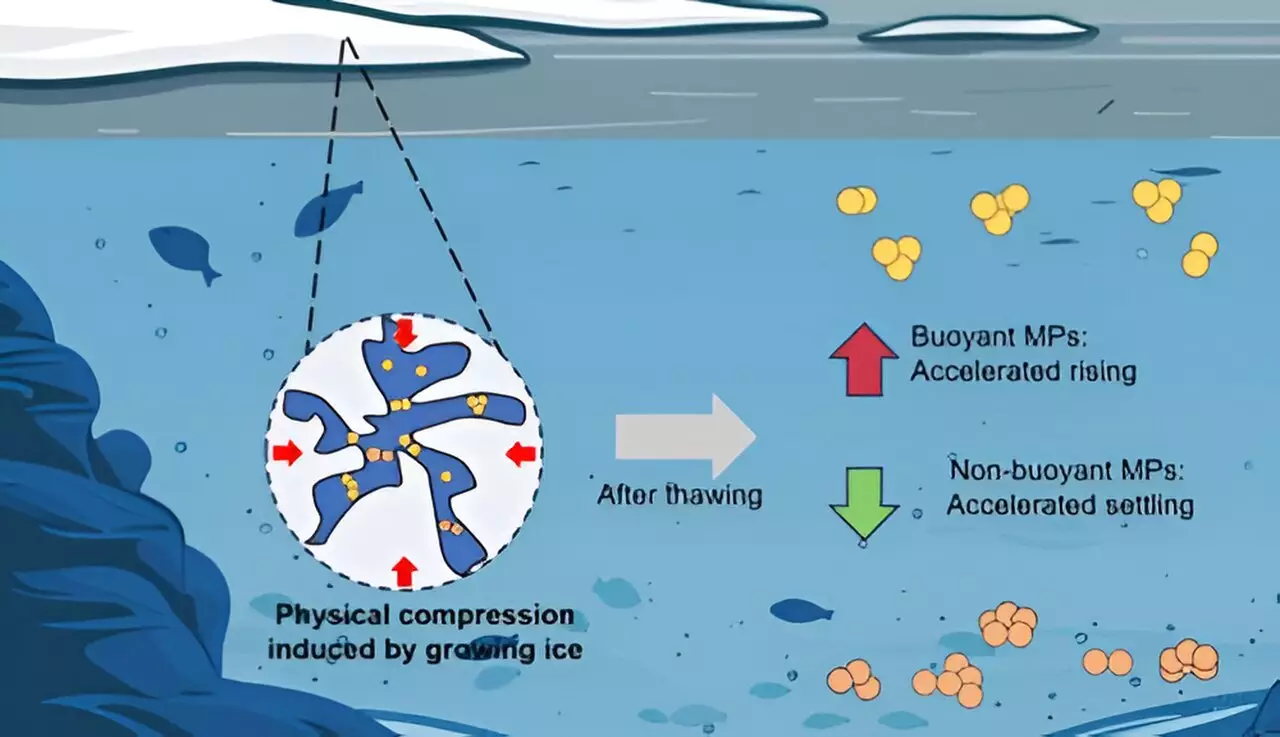Microplastics have become a pressing environmental issue, contaminating waterways around the globe. A recent study published in the journal Environmental Science & Technology highlights a specific yet under-explored dimension of this problem: the effect of ice formation and melting on microplastic particles in aquatic environments. While the original research delves into the complex interplay between freezing temperatures and microplastic behavior, this article aims to broaden the discussion by analyzing the implications of these findings for environmental policies and future research.
The Transformation of Microplastics During Freezing
The study’s authors, led by Chunjiang An, reveal that microplastics suspended in water undergo significant changes when ice forms and subsequently thaws. These changes bear relevance not only to the physical characteristics of the particles but also their environmental ramifications. The research indicates that the freezing process can alter the size and buoyancy of microplastics based on their polymer type. For instance, polyethylene (PE), known for its buoyant tendencies, demonstrates a notable increase in particle size after thawing—by as much as 46%—while materials like polyurethane (PU) show only a 9% increase due to their hydrophilic nature.
These findings suggest a complex relationship between microplastics and environmental conditions, posing questions about how such transformations affect ecological systems. As microplastics change their sizes and sink or float based on their densities, the implications on aquatic life forms become ever more pertinent. The microplastics’ varying behaviors—whether they remain suspended in the water column or settle into sediments—can influence the bioavailability of these pollutants to organisms at different trophic levels.
Another crucial aspect is the interaction of these particles with salinity levels. The research highlights that in saltwater conditions, freezing had a pronounced effect on PE, PU, and polytetrafluorethylene (PTFE) particle sizes. This observation could reshape our understanding of how microplastics behave in different aquatic ecosystems, especially since many high-salinity environments, such as estuaries and coastal regions, are directly affected by ice formations.
Further analysis suggests that brine channels found in ice may provide microplastics with avenues to escape compression, allowing them to maintain smaller size distributions in high-salinity conditions. This nuanced understanding of particle behavior is vital for developing effective strategies aimed at mitigating microplastic pollution.
The study’s findings pave the way for further research in multiple directions. One crucial aspect is the need for long-term studies to observe how prolonged freezing affects microplastic behaviors over extended periods, as natural freezing seasons can last several months. Such research would yield invaluable insights into the fate of microplastics in cold climates and help to reshape our current models predicting microplastic distribution and accumulation.
The environmental implications of this research are profound. Understanding the consequences of microplastic transformation during ice formation can inform policymakers and conservationists about the potential hotspots for microplastic accumulation. These insights could guide initiatives aimed at reducing plastic pollution in vulnerable freshwater and marine ecosystems.
Moreover, as the world grapples with climate change and its impacts on ecosystems, researchers must investigate how changes in temperature extremes could affect microplastic persistence and circulation in ice-covered waters. This knowledge is critical for creating effective management and remediation strategies that safeguard aquatic health.
Ultimately, this research sheds light on the often-overlooked interactions between microplastics and freezing processes in aquatic environments, inviting a deeper analysis of how these factors contribute to the plastic crisis. The nuanced behaviors of polymers in response to ice, salinity, and other environmental conditions highlight the complexity of microplastic pollution and reinforce the need for comprehensive strategies to address this global challenge. As we move forward, integrating this knowledge into policy frameworks and ongoing research will be essential in protecting our water resources and maintaining ecological balance.

